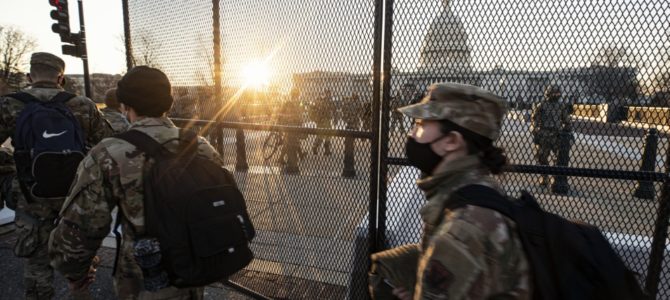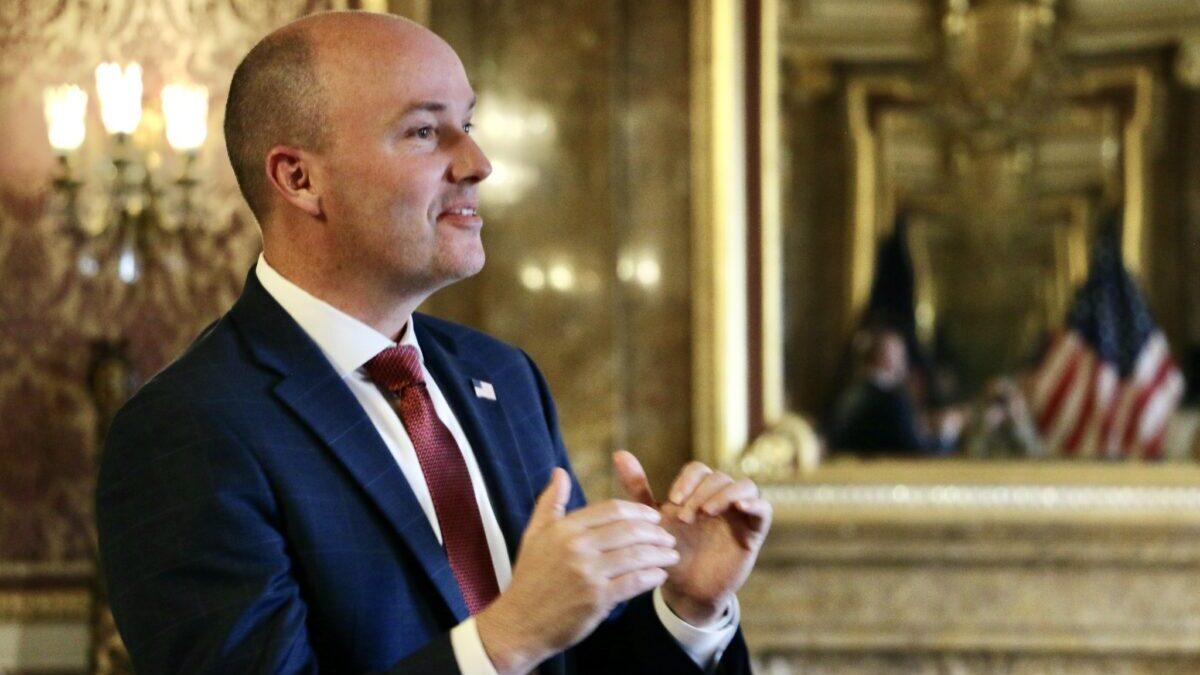
When riots swept the nation’s capital on Jan. 6, 2021, National Guard troops were called up to help keep the peace. Two months later, they’re still there.
The Capitol Building remains surrounded by a seven-foot fence. The area looks more like an occupied capital in one of our small wars of empire than the seat of government in the land of the free.
That said, if anyone is going to station and control troops in D.C., it probably should be the federal government and not one of the states or the city itself. Congressional Democrats believe riots could return at any moment. While that’s unlikely, protecting Congress from mobs is part of the reason we have a federal district in the first place. In building an armed camp to protect themselves from the people around them, Democrats implicitly endorse the case for D.C. remaining a federal district, and not a state.
Events shortly before the Constitutional Convention of 1787 influenced the Framers’ thinking regarding the capital. Four years earlier, the federal government created by the Articles of Confederation resided in Philadelphia. That Congress didn’t control any portion of the city, or even their own building. They met in the Pennsylvania State House, now known as Independence Hall, which they shared with the state legislature.
Indeed, the Confederation Congress had little control over anything, including federal revenue. States were asked to contribute to the federal government, but there was no mechanism to make them do so if they refused or delayed, leaving the federal government chronically short of money.
So, when soldiers from the Continental Army demanded the wages they had been promised during the war, Congress simply ignored them. Even if they had the will to pay, the federal coffers were empty.
This sort of danger has brought down many new nations, and it might have done the same to the United States. On June 21, 1783, about 300 troops marched into Philadelphia from Lancaster against the orders of their officers and demanded what they were owed. Congress had adjourned for the weekend, but its presiding officer, Elias Boudinot, summoned it back into session. As the congressmen arrived, the troops surrounded the building.
The Confederation Congress had no authority over state militias in peacetime, and asked Pennsylvania’s executive, John Dickinson, if he would call out the state militia to keep them from being killed or overthrown. Dickinson declined. The troops and the congressmen stared at each other for a while, but fortunately, no violence ensued. The congressmen exited the building and passed through the mob unharmed, save for some insults from the now drunken soldiers.
Following the incident, Congress didn’t wait to see if the peaceful conditions would endure. They left town, assembling in Princeton, N.J., three days later, and did not return to Philadelphia for seven years.
When the Constitutional Convention met in Philadelphia four years later to write a better governing document for the nation, the lesson of that tense weekend in 1783 was not forgotten. The new Constitution contained ample provision for Congress and the rest of the federal government to be safe from insurrection, attack, and lack of defenses.
In explaining the part of the Constitution that provided for a federal district, James Madison wrote in Federalist No. 43 that such a district was an “indispensable necessity”:
Without it, not only the public authority might be insulted and its proceedings interrupted with impunity; but a dependence of the members of the general government on the State comprehending the seat of the government, for protection in the exercise of their duty, might bring on the national councils an imputation of awe or influence, equally dishonorable to the government and dissatisfactory to the other members of the Confederacy.
In short, Madison and the other Framers didn’t want Congress to ever again have to depend on Dickinson or any other state governor to bail them out of trouble. The federal capital would be secured by federal officials. That principle held — until 2021.
The modern capital is a web of overlapping police jurisdictions, owing to Congress’s haphazard granting of partial home rule to the District. Washington has its own police force, headed by a chief who is appointed by the mayor. It also has a National Guard, who may be called into action by the president.
The U.S. Park Police is part of the Department of the Interior and has jurisdiction over the parts of the city that are run by the National Park Service. The U.S. Capitol Police is run directly by Congress and has jurisdiction over the Capitol and other buildings, parks, and streets related to it. The Federal Protective Service is run out of the Department of Homeland Security and protects people in federal buildings other than those run by Congress.
The point is: Washington has plenty of law enforcement. Yet, because it is all delegated to separate governments, branches, and agencies, Congress has reason to feel insecure.
Ironically, while House Speaker Nancy Pelosi may not want to build a wall on the Mexican border, she is happy to build a fence to keep out her fellow Americans, including those who live and work in the district. Likewise, she and other Democrats opposed when President Trump deployed federal law enforcement to Portland after federal property was attacked there, but troops in the streets of the capital? No problem.
Democrats might answer that there is a difference between Oregon and Arizona on the one hand and Washington, D.C., on the other. They would be right: a mob taking over a National Wildlife Refuge or even a federal courthouse does not imperil the republic the way seizing the Capitol or the White House would. But that is exactly why the Constitution grants the federal government the power to “exercise exclusive Legislation in all Cases whatsoever, over such District.”
Pelosi and Senate Majority Leader Chuck Schumer know this. Even though they claim to favor D.C. statehood, they ignore the complaints of local leaders about the overwhelming show of force. The residents and local government in the District are turning against all of the security theater. As D.C. Council member Christina Henderson tweeted:
It’s been 45 days since the fencing with razor wire went up around the Capitol complex, blocking access to portions of major streets in DC. Why can’t anyone tell us when it’s coming down? This cannot be the new normal.
Of course, they won’t tell her when it’s coming down, because they don’t answer to her and don’t intend to. Overblown though they may be, the security measures in place are in line with the intended purpose of a federal district. The fence and the troops are to protect Congress, not to make the city safer for anyone else.
There are plenty of problems with how the District is governed, but Congress controlling its perimeter is not one of them. They may not admit it, but congressional Democrats are underscoring that making the district into a state would be a big mistake.









